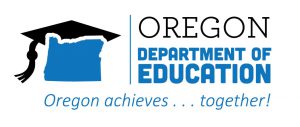Requirements – OHA and ODE strongly recommend that schools implement COVID-19 testing.
Testing will help to quickly identify COVID-19 cases in K-12 schools, interrupt viral spread through households and in classrooms, reduce the risk for students and staff during in-person learning, and may be used to shorten the length of quarantine for exposed individuals who test negative when this is recommended by the local public health authority.
On-Site COVID19 School Testing Requirements – Oregon Health Authority (OHA) guidance for how to implement on-site testing in K-12 facilities. (1/14/22)
OHA K-12 Reporting Portal – Daily reporting of all positive (no longer negative) results through the OHA K-12 Reporting Portal OHA requires all COVID-19 test results, both positive and negative, to be reported daily. Schools must submit all test results through the portal.
1/16/22 Test Kit Ordering
Schools can order more Binax NOW and iHealth home tests nowvia Smartsheet. Due to nationwide shortages, it is recommended that schools order early.
Note: Oregon’s state distribution warehouse will move to a new facility between Feb. 21 and March 4, 2022 and will be unable to operate during that time. If you order supplies from the warehouse, including COVID-19 test kits and personal protective equipment (PPE), please place your order no later than Feb. 15 to avoid disruption of service. Plan on ordering enough supplies to last through mid-March.
Please send any questions to ORESF8.LogisticsChiefs@dhsoha.state.or.us
Binax NOW tests — Order reagent only
- Email Technical Services: ts.binax@abbott.com, CC Lisa Licata -Lisa.Licata@Abbott.com
- Subject: BinaxNOW COVID-19 Ag Reagent Replenishment
- Include the following information in your email:
- Facility Name:
- Contact Name and phone number:
- How many Kits do not have reagent?
- How many cards are left in each of those kits?
- Lot Numbers of those kits:
- Reason why reagent replenishment is needed:
- Did the kits arrive damaged?
- Mailing address to send reagent:
Supplemental Forms
Abbott BinaxNOW Testing Log (2/20/21) – Results of each test must be promptly logged. Testing logs must be kept in a secure location and may be audited by OHA. Jackson County schools must use the Jackson County log below.
COVID19 Testing K-12 Registration Form (2/20/21)
COVID19 Testing Consent Form – All students must have written consent on file prior to COVID-19 testing; staff may give verbal consent at the time of testing. Staff are not required to have a consent form on file in order to be tested for COVID-19. (2/20/21)
Understanding your Positive COVID19 Result (2/25/21)
Understanding your Negative COVID19 Result (2/25/21)
Guidance
ODE Update (2/9/21)
The release of Ready Schools, Safe Learners guidance on 1/19/21 (RSSL has since been replaced by RSRF) included information and requirements related to a new Oregon Health Authority (OHA) administered school testing program for COVID-19 using BinaxNow Antigen tests. Many are now registered and actively implementing the testing strategy as outlined by OHA.
This testing program is available to all public and private schools in Oregon. It is a service to students and staff that can help to reduce disruption from COVID-19.
Notes on the OHA On-Site Testing Guidance
The testing program guide was updated on 2/10/21 with the following small changes:
- When registration forms are submitted for the entire school district rather than individual schools, OHA cannot determine the number of testing kits that should be allocated for each specific school. Also, data must be collected on each school that’s participating, (i.e. the total number of students and staff onsite, onsite testing personnel name, school grade, contact information, etc.).
- An “indeterminate” result can be indicative of a flawed test kit. After the school testing administrator repeats it a second time and receives this result, they should immediately contact OHA at schooltesting.covid@dhsoha.state.or.us to request a new kit.
You can email schooltesting.covid@dhsoha.state.or.us for more information on this aspect of the program.
Any formal complaints regarding schools who are required to offer access to the testing program will be processed through OSHA.
ODE Training Resources
ODE provided a closed captioned recording of a webinar provided by Dr. Judy Guzman-Cotrill titled, “A Review of BinaxNow COVID-19 Antigen Testing in K-12 Schools.”
This training covers essential information for offering access to the Oregon Health Authority coordinated school testing program.
Click here for the presentation slides and an FAQ.


